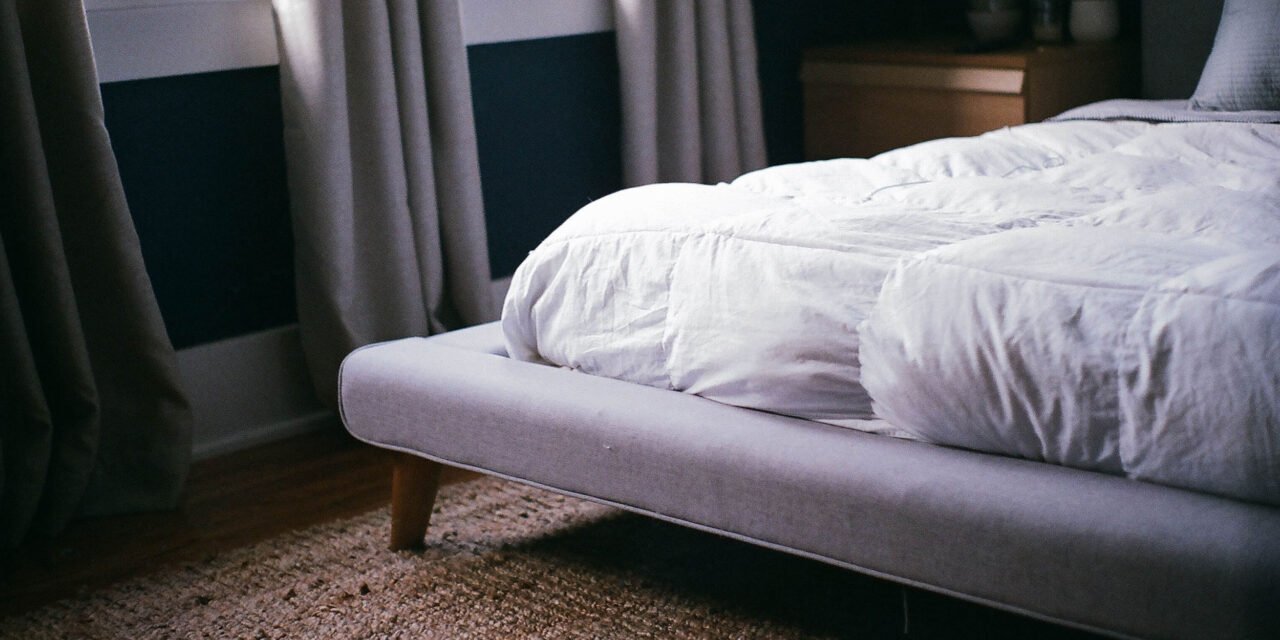Moving is an exciting time; perhaps you’re heading off to college, starting a new job, or just looking for a change of scenery in a new city. However, there’s also plenty of preparation that goes into moving, particularly when it comes to packing and relocating your belongings.
One of the bulkiest items to pack is your mattress. Like the rest of your belongings, you want to make sure your bed is in tip-top shape during the move, especially considering it’s where you sleep each night. To help with this process, we’ll show you how to protect a mattress during a move.
Should I Get a New Mattress?
The average lifespan of a mattress is seven years, though taking good care of your bed could help extend this. Also, moving somewhere new is a prime opportunity to take stock of your current sleep space and see whether it is a good time to invest in a new mattress.
If you’ve had your current bed for close to seven years, you may want to consider getting a new one then. Not only can a new bed provide an excellent fresh start to your new bedroom, but it could also make things easier for moving. For example, rather than transporting a mattress from your current home to your new one, all you need to do is have your new bed delivered to your updated address.
Buying a new mattress is also a chance to make sure your sleep space is the best it can be to help you get adequate rest. Sleep Advisor features over 100 top-quality mattresses on their website and can help you sort through the different brands to find your perfect match.
If your bed is only a few years old though and performs well, then the following tips should ensure the bed stays in mint condition for your new home.
Use a Mattress Bag
The first step to keeping a mattress protected while moving is to cover it up, and mattress bags are a great solution to this. These are large plastic bags designed to encase your entire mattress. Furthermore, the plastic used with these bags is a thick, heavy-duty material that allows them to be more resistant to tears.
Just as beds come in multiple sizes, so do mattress bags. Some brands will offer Twin/Full size, Queen/King size, and a Universal size. However, others may offer direct sizes such as Queen or King.
When placing your mattress inside the bag, you should remove additional bedding such as sheets and blankets. These extra bedding items can be stored separately and then washed before putting them back on the bed after you’ve moved. We also suggest reading any available reviews before purchasing a bag to ensure it is a quality product.
Once the mattress is completely inside, you will need to secure it with some tape. Rather than reaching for scotch tape, use something more durable, such as shipping, masking, or duct tape.
Where can I find them?
The good news is that mattress bags are easy to find. You can buy them at stores such as Home Depot and Walmart or order them online through Amazon. Plus, these products are very affordable, with many available for under 20 dollars.
Benefits of Mattress Bags
These plastic bags are an excellent investment because they provide a solid barrier between your mattress and various outside elements that could damage the quality of your bed.
Prevent Dust and Dirt Exposure
During the moving process, your bed can become exposed to lots of dust and dirt, especially during the journey over to your new home. Not only can dust and dirt impair your mattress’ appearance, but they could also affect your health. Health officials report that dust can cause eye irritation, coughing, sneezing, hay fever, or asthma attacks.
Protect Against Water Damage
Water is one of a mattress’ worst enemies. A wet mattress can quickly become a breeding ground for mold and mildew. Mold is a fungus that typically grows on organic matter that is damp or decomposing, whereas mildew is a specific type of mold.
Not only can water damage the quality of your mattress, but it can have adverse health effects as well. According to the Centers for Disease Control and Prevention (CDC), mold exposure may cause a stuffy nose, wheezing, and itchy or red eyes and skin. Additionally, those who are allergic to mold or have asthma could experience more severe symptoms.
Guard Against Pests
Another advantage of these bags is that they can help guard against pesky bed bugs. These pests are tiny reddish-brown insects that feed on human blood, much like mosquitoes.
Furthermore, once you have them, it can be an extensive process to get rid of them. Travel is considered one of the main ways bed bugs can find their way into your home, and unfortunately, mattresses are a favorite place of theirs to reside.
Clean and Dry Your Mattress
In general, you should do a thorough cleaning of your mattress about two times each year. However, a move is a great excuse to do extra cleaning to ensure you don’t bring any added dirt and grime to your new home.
To remove dust, go over the mattress with a vacuum using the device’s upholstery attachment. If you plan to spot clean your bed with any cleaner, allow the mattress enough time to fully dry before placing it into a bag for moving.
Get Help Moving the Bed
If your move is more local, now is a great time to call in a favor from family and friends to ask for help loading and unloading your furniture. Mattresses are bulky, and as strong as you are, you will still need help carrying one.
You should at least have two people carrying the mattress. Plus, having two people means you shouldn’t have trouble seeing where you are going.
In the event your new destination is a city where you don’t know anyone yet, consider hiring a moving company to help you unload your furniture. Movers are experienced at handling large furniture items, and it will allow you a nice break from any heavy lifting.
Establish a Clear Pathway
Whether you are moving the mattress on your own with friends or hiring professionals, you should create a clear path to transport the item. Leave the necessary doors open so that the people carrying the mattress can easily move through.
You should also put away any objects that could block their path. The smoother the route, the less risk of accidents.
Rent a Moving Truck
Some folks may want to forgo renting a moving van or truck. Instead, they consider placing the mattress on top of a car or in the bed of a pickup truck. While that may save you some money in the short term, it could mean long-term damage to your mattress.
Placing the bed in the back of a pickup truck or the roof of a car exposes the product to the elements, including dirt and debris. Furthermore, you could hit rainy or snowy weather. While the bag is designed to protect against some moisture, it may not withstand a full-on downpour or snowstorm.
Plus, renting a moving truck will give you plenty of space to transport the rest of your belongings. Even if you are moving across town, running back and forth can be very time-consuming. A rental truck should allow you to move in a single, convenient trip.
You may also want to consider renting a dolly or hand truck as well. These items can make the process of moving heavy, bulkier items more efficient and less physically demanding.
Load in a Secure and Upright Position
Once you have your mattress packed in a bag and your moving truck at the curb, it is time to load in the bed. How you place the bed in the truck, though, is just as important. To avoid your mattress potentially getting compressed by heavy furniture during the drive, we suggest placing the item upright against one of the walls.
You should also securely tie down the bed so it does not move around. Ratchet straps or nylon rope should work well. These items are usually available at most hardware stores such as Home Depot or Lowe’s.
You may also wonder whether it is okay to fold up your mattress. Foam beds made with memory or latex materials should fold up and retain their shape once they reopen. However, if your bed has coils, folding it could damage the interior build.
Drive With Extra Caution
You should always drive as safely as possible. However, when transporting your furniture and belongings, you should drive slowly and carefully for the entirety of the trip.
For instance, if the move is not too far, consider taking back roads instead of the highway, which will allow you to go at slower speeds for most of the time. Potholes and speed bumps could also jostle things around, so if you can, try to avoid these as well.















